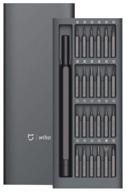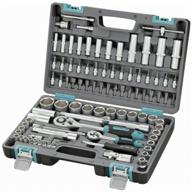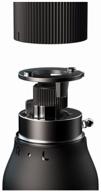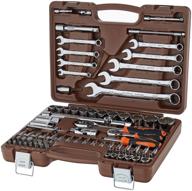
Review on 🌞 Intelligent 30A Solar Charge Controller for 12V/24V Solar Panels with Dual USB Ports, LCD Display, Timer Setting, and Adjustable Parameters for ON/Off Hours by Stanley Molden

Will the battery fry if you have a 100-200w panel or more
I looked through 3 cheap charge controllers and spent 2 months on them. I'm writing this review because I wish someone had told me about it sooner. I finally settled on a 'real' MPPT controller (model Epever Tracer) which I found on eBay for $62 (usually $80). parallel. The problem is that all cheap all-solar voltage regulators in my setup produce charging voltages of 15.6V or more. The "bulk charge voltage" of lead-acid batteries must be limited to 14.2-14.4 V, and only in the presence of current. Once the current slows to 14.2V, the controller should drop to a "float voltage" which is typically 13.7V (although even that is far too much for an already charged and stored battery. Since I use my pad to charge my RV battery, even when not in use the floating voltage should be 13.2-13.4v). Either way, a charge voltage of 15.6V will fry a lead-acid battery for a long time. I actually heard my battery "hiss" (meaning the outgassing that converts water into hydrogen and oxygen, which will eventually deplete the fluid supply of any lead-acid battery, whether flooded or sealed). Batteries last a long time with proper care (approx. 7 years). Specifically, this means never (or rarely) let them discharge more than 50% (equivalent to about 12.4V. Once they drop to 10.6V, consider the battery dead and probably destroyed), and leave it do not store in discharged condition . This means that all lead acid batteries that are stored or not in use should be trickle charged at 13.2-13.4V. So as far as I can tell all PWM controllers will overcharge the battery. They will either catastrophically overcharge (at 15.6V for any period of time) or slowly overcharge if the float voltage on the stored battery is higher than 13.4V. Another thing cheap PWM controllers don't get right. , consists of switching the charging mode from "Bulk Charge" mode (which adjusts the voltage to get a fixed current, which for safety reasons should correspond to the capacity of the battery Ah / 8) to "Absorption Charge" mode (that's a fixed voltage, typically 14.2) , for "floating" charge, which is typically 13.7V (although this should be lower for long-term maintenance of unused batteries). They don't work particularly well when switching between sop and trickle as they stay on the sop for 2 hours instead of switching to trickle once the sop current drops to a low value. A cheap (under $20) 12v mains powered charger understands 3 stages and does it perfectly. You can see it going through the different charge stages: bulk charge (usually 6A for cheaper models), absorption charge (fixed voltage), floating charge. I was hoping that a cheap solar charge controller could do the same, but as far as I can tell they all have bugs that will either destroy your battery or reduce its lifespan. Bottom line: If you want your batteries to last (and I paid close to $200 for mine), treat yourself to a "real" MPPT controller. You can get one for $80 or less. You also get about 30% charging efficiency. Lithium batteries can be a bit more forgiving, but lead-acid batteries need to be handled with care. Finally, a note on MPPT charge controllers. Some cheaper (PWM) controllers advertise MPPT, that's nonsense. Real MPPT controllers have internal DC-to-DC circuitry and a more expensive small transformer that converts the relatively high panel voltage (mine is 20V open) to the correct charging voltage of 14.2V or slightly higher. At the same time, they increase the current, so you get more power out of them. I haven't seen a single "real" MPPT controller under $60. You can tell by the fact that they are bigger and heavier. Another point to note is that lead-acid batteries lose about 25% per charge-discharge cycle (unlike lithium-ion batteries). So when you calculate loading time, you need to take that into account. This means that a 100Ah battery charging from a half-discharged state will require 50Ah x 1.25, or approximately 6A x 10 hours of charging if you use a wired charger. .I hope this is helpful.
- Good product for the price
- Some cons
New products
Comments (0)
Top products in 🔋 Jump Starters, Battery Chargers & Portable Power
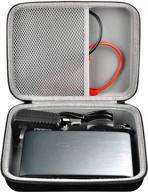
Case Compatible With Halo Bolt Portable Car Battery Jump Starter 58830/44400/57720 MWh Charger. Power Bank Holder For Halo Power Station 100/For AC Outlet.(Not Fits For Halo Bolt Air, Box Only)

24 Review
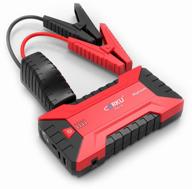
CARKU Pro-10 black/red

91 Review
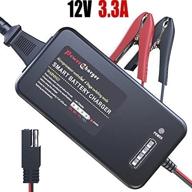
Efficient Charging With LST 7 Stages 5A Battery Charger - 3.3A 12V For Ultimate Performance

35 Review

Mroinge Automatic 6V/12V Trickle Charger For Vehicles, Motorcycles, Boats And More - Maintain Your Batteries With Ease!

29 Review


